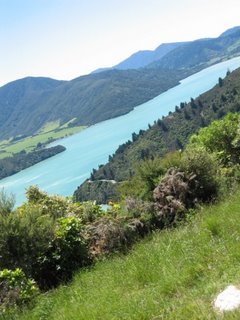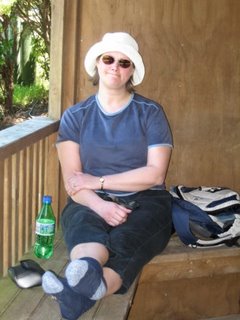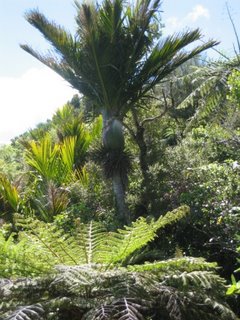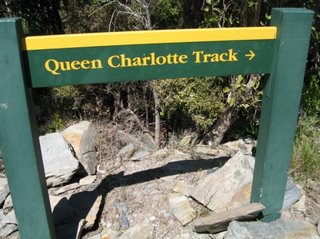Long before the inter-island ferries plied its waters, Queen Charlotte Sound (Totaranui) was an important trade route for Maori, and provided good shelter and bountiful seafood for the many Maori who lived there. The early European explorer, Captain James Cook, also took advantage of the shelter and natural bounty of the Sounds, making Ship Cove (Meretoto) his New Zealand base. He spent more than 100 days there between 1770 and 1777.
Since that time, the area has been the scene of a diverse range of activities from gold and antinomy mining, whaling and fishing through to tourism and forestry. The Queen Charlotte Track passes through a variety of vegetation types, from grassy farmland to undisturbed native forests. At sea level, the forests are particularly lush. Ferns, tree ferns, nikau palms, climbing kiekie vines and perching plants make up a spectacular coastal forest. Several forest birds are common along the track, including the bellbird, tui, fantails (saw one of these) and the weka (shared lunch with one of these) . Along the shoreline shags (cormorants), gannets, terns and shearwaters can also be glimpsed.
A view up the track

Views to die for (that's if the tramping doesn't get you first!)
 Well a girl needs a break for lunch!
Well a girl needs a break for lunch!
 More views to keep you going
More views to keep you going


Woodland kiwi style








No comments:
Post a Comment